Lampang is more than just Wat Phra That Lampang Luang
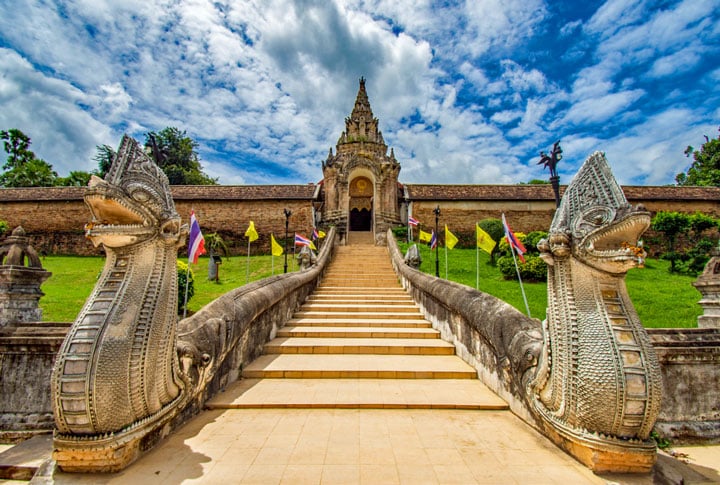
Wat Phra That Lampang Luang
Lampang was an important city in the northern principality of Lanna for centuries. Nestled on the banks of the Wang River, between the Khun Tan Hills to the west and the Phi Pan Nam Hills to the east, Lampang was at the strategically important intersection of the roads connecting Kamphaeng Phet and Phitsanulok to Chiang Mai and Chiang Rai.
This location brought prosperity to the city and region, which was translated into a number of particularly beautiful temples, with the highlight being the Wat Phra That Lampang Luang, which is located about fifteen kilometers from the city and to which I once devoted a contribution to Thailandblog.
Personally, I have visited Lampang several times, usually on my way to or from Chiang Mai and I must admit that this city has some charm. The center can be a bit hectic at times, but hey… Thai city center isn't it? In the evening you can relax on the steps on the banks of the Wang and a visit to the Kad Dong Ta Streetmarket is always a nice bonus. However, many visitors to Lampang limit a visit to this city to exploring the Wat Phra That Lampang Luang and the obligatory ride in the tourist horse-drawn carriages. And that is a bit of a shame because there are a few other temples in the immediate vicinity that, although not as imposing as Wat Phra That Lampang Luang, are worth a visit. Today I would like to take you to a few of these special temples and monasteries.
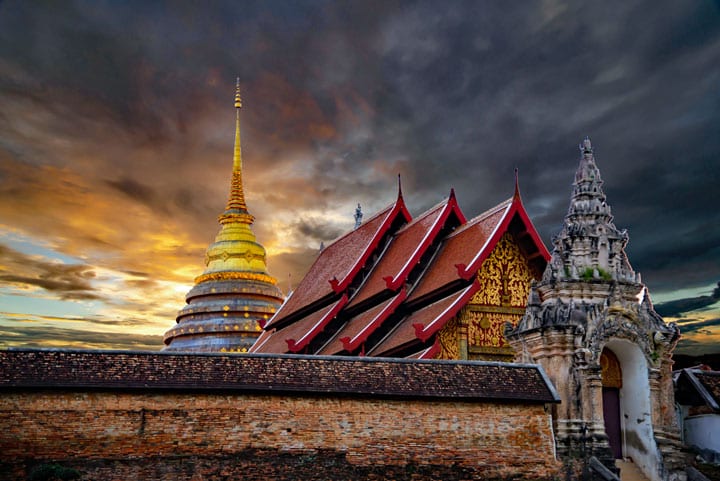
Wat Phra That Lampang Luang
Wat Phra Kaeo Don Tao on Suchada Road is perhaps the most revered temple in Lampang. This has everything to do with the fact that this temple once housed Phra Kaew Morakot, the Emerald Buddha, the most revered Buddha statue in the country. How this statue, barely sixty centimeters high, ever ended up in Siam is a mystery. However, it is historically established that it was found in 1434 at Wat Pha Yah in Chiang Rai after lightning struck the great chedi of this temple during a severe storm. To the astonishment of the hastily rushed monks, a miraculous because undamaged deep green Buddha statue was found among the rubble. It was not long before this became the object of special veneration and pilgrims from far and wide flocked to Chiang Rai to visit the temple, now renamed Wat Phra Kaew.
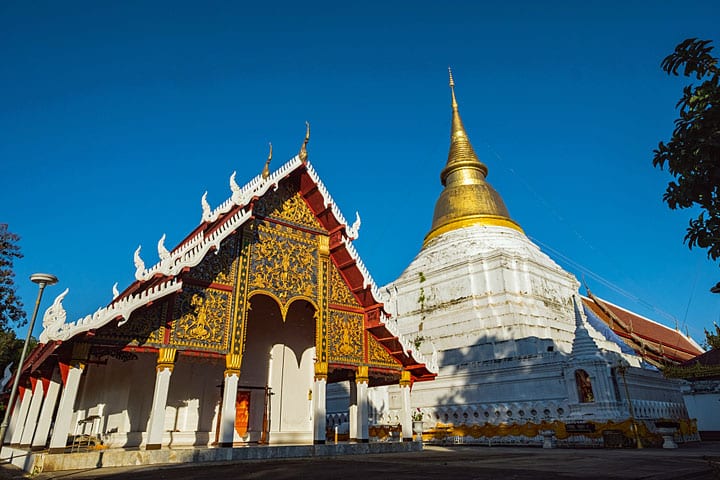
Wat Phra Kaeo Don Tao
When the Lanna king Sam Fang Kaen wanted to transfer the statue to the capital Chiang Mai in 1436, something strange happened. The white elephant that was selected to take the shrine with the statue to the capital stubbornly refused to go to Chiang Mai three times. Each time he turned his trunk towards Lampang. The monarch concluded that this indicated divine intervention and moved the statue to Lampang where the Wat Phra Kaew Don Tao was built specifically to house it. The emerald Buddha remained there for 32 years and was then, by order of King Tilokaraj, transferred with the necessary ceremony to the capital Chiang Mai where it was placed in the Chedi Luang.
In front of the large, fifty meter high chedi with gilded spire, in Wat Phra Kaeo Don Tao is a particularly beautiful IT world;p with a roof of no fewer than ten storeys, a Burmese Pyatthat of the type that we also find further north in Mae Hong Son . It was built in 1909 at the request of the then governor. The chedi itself is known as Ched Phra Boromathat and it is said that a hair of the Buddha was interred in it. In addition to the beautifully proportioned Wihan Phra Non where – as the name suggests – you can find a reclining Buddha and the equally elegant ubosot from 1924, you can also find a life-sized and white-painted stone elephant on the temple grounds, which must be remembered. keep alive the elephant to which this temple owes its existence.
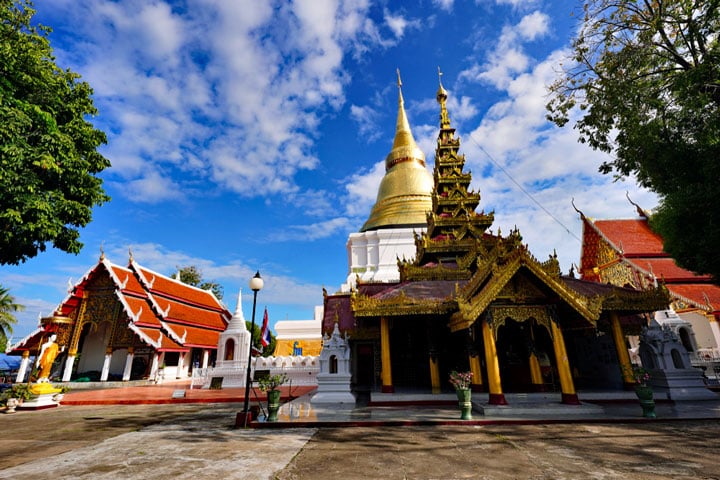
Wat Suchadaram (kwanchai / Shutterstock.com)
Next to the Wat Phra Kaeo Don Tao and within the same enclosure is also the small Wat Suchadaram. This temple was built in Lanna style but also has Laotian style features and that is not difficult to explain because this temple was built in 1804 by refugees from Chiang Saen, an ancient border town on the Mekong on the border with Laos, which had just been conquered by the Burmese. looted and largely burnt to the ground. However, the wihan is in Burmese style and is guarded by life-sized menacing looking Chinten, mythical lions that are the Burmese counterparts of the Siamese-Thai Singh, This was not the only temple in Lampang that was built by refugees from Chiang Saen, because the smaller Wat Pong Yang Khok, which is located slightly west of the city, was also built in 1804-1806 by these refugees.
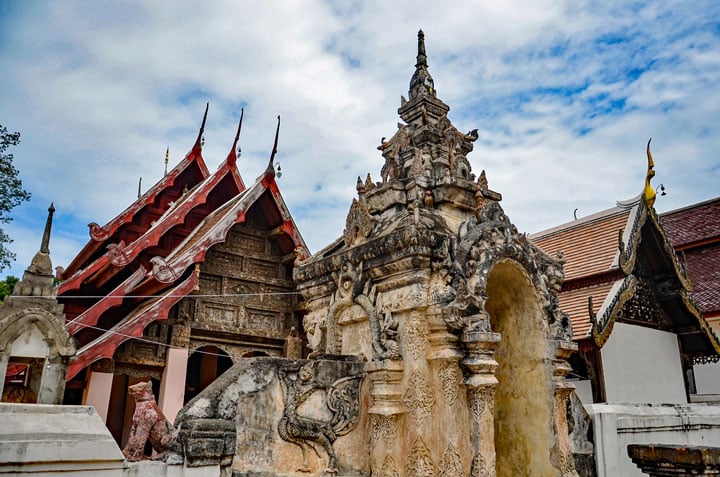
Wat Lai Hin Luang
Wat Phra Kaeo Don That is not the only temple in Lampang that owes its existence to a grumpy elephant. Wat Lai Hin Luang, located between road no. 4007 and the Wang, is said to have been erected after an elephant, which had left India with a relic of the Buddha, stopped at this place and refused to move any further… . The construction of this small but very charming temple is said to have started in 1683 by a Burmese prince and his followers. Like all legends, this one may also have some truth because the architecture of this temple is clearly influenced by Burmese style features. When visiting this photogenic temple, be sure to note the exuberant entrance gate to the wihan and enjoy the stylistic simplicity of the wihan. Be sure to admire the skillful carving of the façade. It's just a pity that the rotten columns that support the roof of the wihan were replaced by ugly concrete copies instead of going for wood again... The little ubosot shows the same simplicity as the wihan and be sure to also pay attention to the sao hongsa or pole with the Sacred Goose, a Brahmanistic object on a column whose roots are said to lie with the Mon. For enthusiasts this: A few kilometers further in the Wat Phra That Lampang Luang there is a second one sao hangsa to find.

Wat Pong Yang Khok (Photo: Wikipedia)
And if that wasn't enough, Wat Pong Yang Khok, west of Lampang, is said to have been built thanks to an elephant. Popularly, this temple is known as Viharn Phra Mae Chamathewi, a reference to the Mon queen of the same name who lived in the seventh century. It is even possible that a prayer hall in honor of this queen once stood here, roughly eight or seven centuries ago, but nothing remains of that. According to legend, Chamathewi was on his way from her capital Haripunchai – present-day Lamphun – to Lampang when an elephant, carrying a miniature golden umbrella, fell to his knees and trumpeted at this spot. As if this were not enough as an omen, the queen suddenly saw lightning bolts shoot out of an ant hill during the subsequent storm at the same location. Plenty of reasons to build a wihan here. The current temple was built much later. Between 1732 and 1759 to be precise. On duty was Phraya Sulao Reuchai Songkhram, a local potentate who probably believed that the construction of a temple complex was never bad for his soul's salvation. The main attraction of this monastery complex is the very beautiful and almost three years old wooden wihan, which is an attractive example of traditionally built prayer halls that - which is unusual - have no outside walls in this region. The very low, hanging almost to the ground and constructed of several layers are mainly intended to keep the rain out.

Wat Pong Sanuk Tai
An open wihan can also be found in the very well-restored Wat Pong Sanuk Tai. A temple may have stood here for more than five hundred years, but the current buildings date from the nineteenth century. This is also the third temple near Lampang with a connection to the refugees from Chiang Saen who settled in this region more than two hundred years ago, because this temple was also often frequented by them. The most eye-catching structure on the temple grounds is without a doubt the mondop, which was built on a curious cruciform ground plan. The builders on duty were Worayanrangsiratchatham, the sovereign ruler of Lampang and Abbot Kruba Anochidhamma, who commissioned this special building in 1888. In the center of the open space, supported by 28 teak pillars, are four Buddhas, back to back, facing the four cardinal directions. A very unusual way of depicting Thailand. It is therefore quite possible that the craftsmen involved came from the Burmese Kengtung. After World War II, this temple fell into disrepair and an injudicious and especially clumsy restoration attempt in 1957, in which a lot of concrete was applied and especially inappropriately lubricated, did not really help either. In 2006-2007, the mondop was restored by heritage workers from Chiang Mai University together with highly motivated locals and with a minimum of resources. In 2008, this joint effort was, more than rightly so, rewarded with a UNESCO Asia-Pacific Award for Cultural Heritage Conservation.
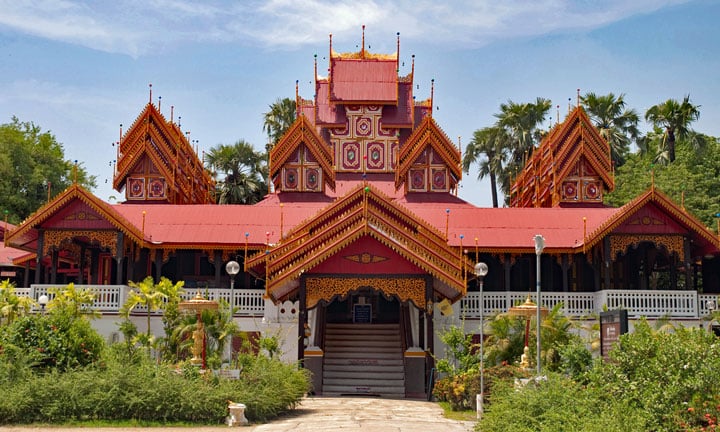
Wat Sri Rong Muang
I think Wat Sri Rong Muang is quite special and utterly Burmese. Barely a century old, this temple on Wang Khwa Road in Tambon Sop Tui was built between 1904 and 1906 by Burmese lumberjacks and barbers who felled trees in the teak forests nearby for the Bombay Burma Company, at the time one of the largest timber companies in Asia. The temple itself is not really spectacular, but the wihan is because of the opulent carvings in combination with the mosaics of thousands of glass fragments that make it a colorful spectacle. It is, in my opinion, not kitsch, but almost about it. The beautifully proportioned teak and gilded Buddha at the back of the wihan is also 100% Burmese and was skilfully carved in Mandalay in the XNUMXs.
So far, dear readers, a personal selection of temples and monasteries in and around Lampang that, if you visit, will hopefully let you look a little further than just Wat Phra That Lampang Luang.


I couldn't agree more with this. We have included these temples several times in our walks and cycle tours through the old part of Lampang and enjoyed the peace and quiet of the small but beautiful temple complexes.
At the end of the bike tour we often enjoyed a delicious lunch in the garden at Lampang Hideaway Guesthouse & Café. This is definitely recommended. Delicious food in a quiet area on the Mae Tui.
Nice review from Wies. We don't have any in our wet country. Sounds very attractive. A bit far but then you have SOMETHING.